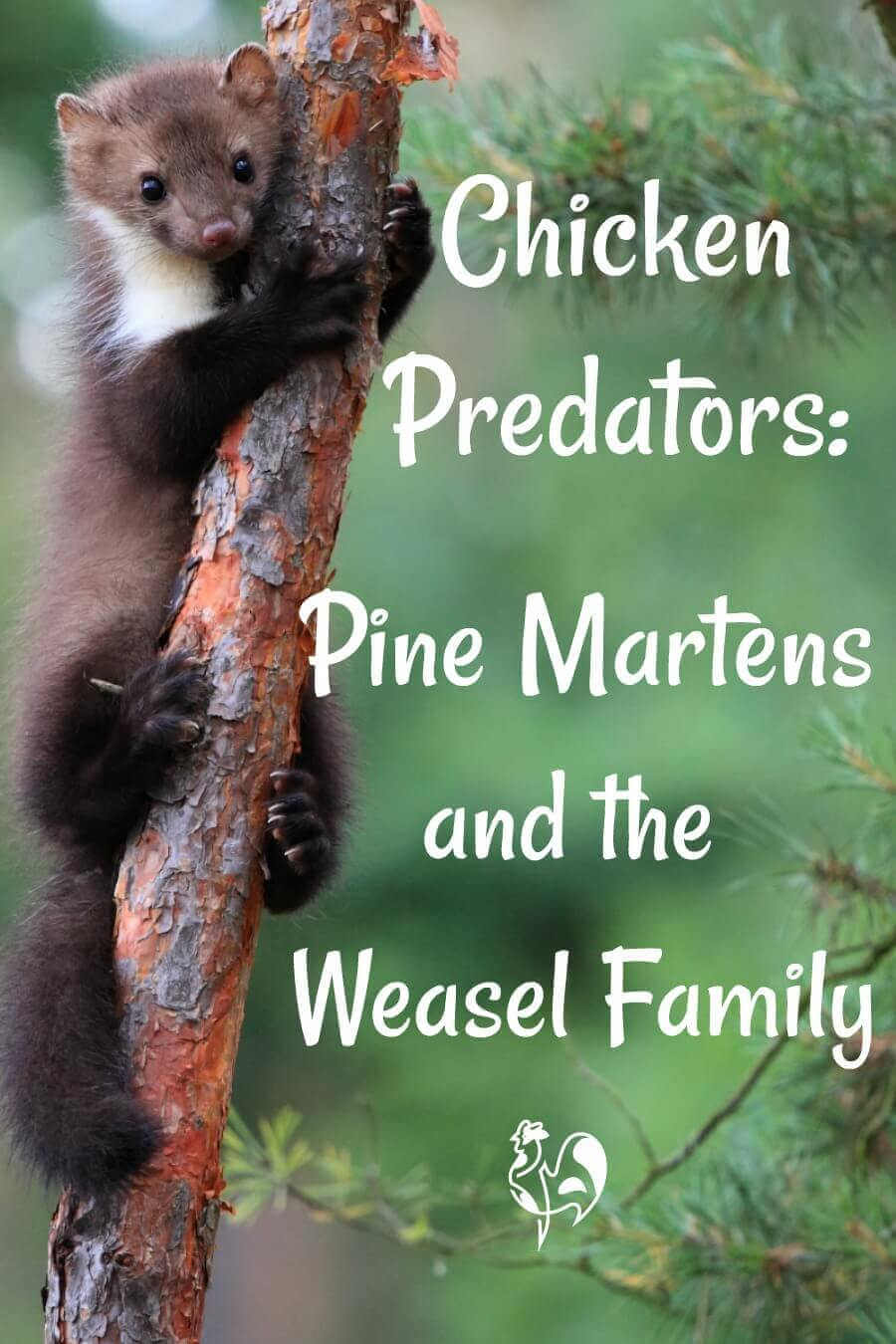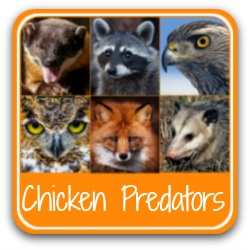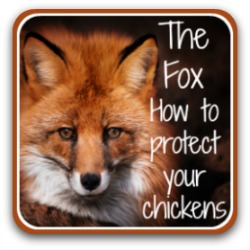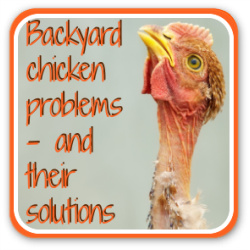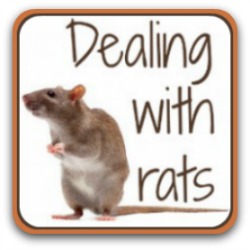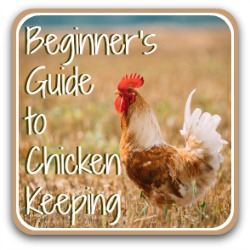Please note: this page does not contain any graphic images but does contain a description of how pine martens and other members of the weasel family kill, so that you know what to look for and how best to protect your flock.
If you'd rather not know, then please - don't go any further.
The pine marten: how to identify and deter this cute-faced chicken predator.
If you've ever come face to face with a pine marten, or any other member of the weasel family, you'll understand exactly what I mean by "cute".
Lots of people will look at them and see a cute face, a bit like a cat, and the kind of cuddly, furry body your kids would love to keep as a pet.
But make no mistake: this "cuddly" creature delights in killing.
Trust me, I know. I have had a total of ten chickens, one of them a massive Wyandotte rooster, killed in one fell swoop by a European pine marten.
Pine martens and the weasel family.
This article talks about the pine marten, because that's how I came to know about this group of predators.
Pine martens belong to the "Mustelidae" family, so this information is equally valid for any other member of that group - including polecats, polecat-ferrets, weasels, mink and stoats.
It's always a good idea to understand something about predator behaviour in order to deal with the problem effectively.
But if you want to skip straight to information about how to prevent the weasel family killing your flock, here's a quick link.
The chicken predator who kills for fun.
It's sometimes hard to tell what's responsible when a predator strikes, but most do leave tell-tale signs.
A fox, for example, will generally leave a pile of feathers but no body. The chicken becomes dinner for adults and cubs alike.
A marten, and any other member of the "Mustelidae" family, tends to kill not for food, but for fun.
More often than not you'll find the carcass of the chicken still in the run. It's one of the things that makes these kills so hard to take. Having any chicken killed is not easy to deal with, but at least when one is taken by a fox you can rationalise that she's part of the food chain.
With a marten that's not possible because usually, it isn't.
What do pine martens eat?
All martens are omniverous, so they eat both vegetable and animal foods, including eggs. Their meat diet tends to be small mammals like mice and voles, but they'll go for baby chicks if they get the chance.
Adult chickens they tend to leave alone once they've killed them. They don't have the capacity to carry them away.
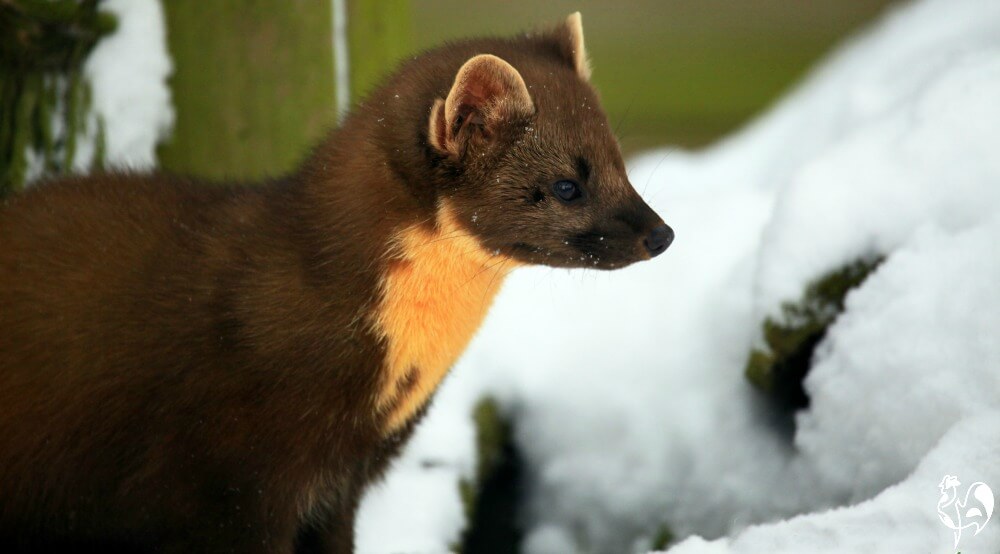 Notice the distinctive orange chest fur of the pine marten. The beech marten's is white.
Notice the distinctive orange chest fur of the pine marten. The beech marten's is white.The pine marten habitat.
There are several different types of marten, all of which prefer to live in scrubland - in particular (as its name suggests), wooded areas.
Both the European pine marten, 'martes martes', and the beech marten, 'martes foina' - also known as the stone marten - are common in Scotland and throughout Europe. The pine marten has recently been re-introduced to England, Ireland and Wales to help control the spread of the grey squirrel.
The European pine marten is a protected species.
The north American marten, 'martes americana', is found throughout the more northern North American states and Canada.
Take a look at the American pine marten.
Meet "Coyote Peterson", who's catching up with an American pine marten in Montana.
"Assassin" is right - watch out for those needle-sharp teeth...
How to tell if you have a pine marten.
Listen for the sound of the pine marten.
One of the easiest ways to tell whether you have a pine marten nearby is to listen for their call sign - it's pretty distinctive and sounds quite aggressive.
Physical signs of pine martens.
Spotting pine martens locally is fairly easy. You'll often see one running along tree branches during the day, although they tend to hunt at dusk and during the night.
You may see their poop, called 'scat', on the edge of trees or on logs. It looks very like fox droppings but larger, and it tends to be coiled rather than straight. During the summer and early autumn (fall) you'll often see bits of berries caught in it.
The smell is very different from any other poop. Whereas fox droppings have a very pungent smell, much like dog poop, martens scent has been likened to damp hay or flowers - musky and sweet, and not unpleasant.
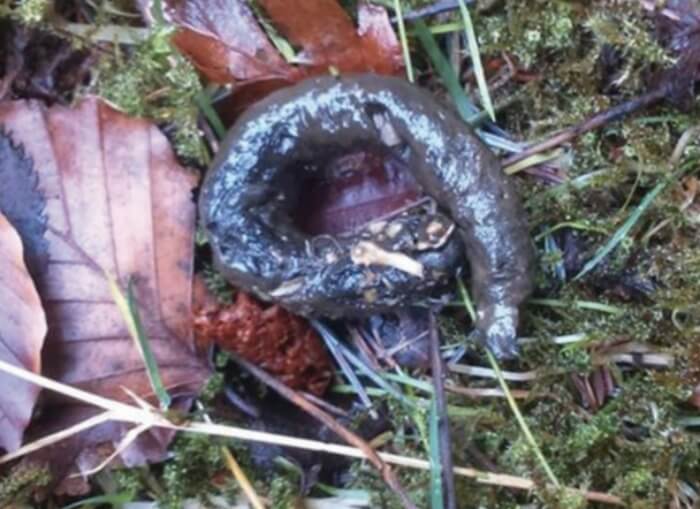 Pine marten scat - look out for it near trees and logs.
Pine marten scat - look out for it near trees and logs.Where do pine martens live?
Martens tend to live in the hollow of a tree, particularly (as their name would suggest!) pines, so look for footprints in mud - they're distinctive because they have five toes.
Both pine and beech martens can also sometimes be found using the dens of other animals, particularly badgers. Foxes are their natural predator, so they tend to avoid fox dens.
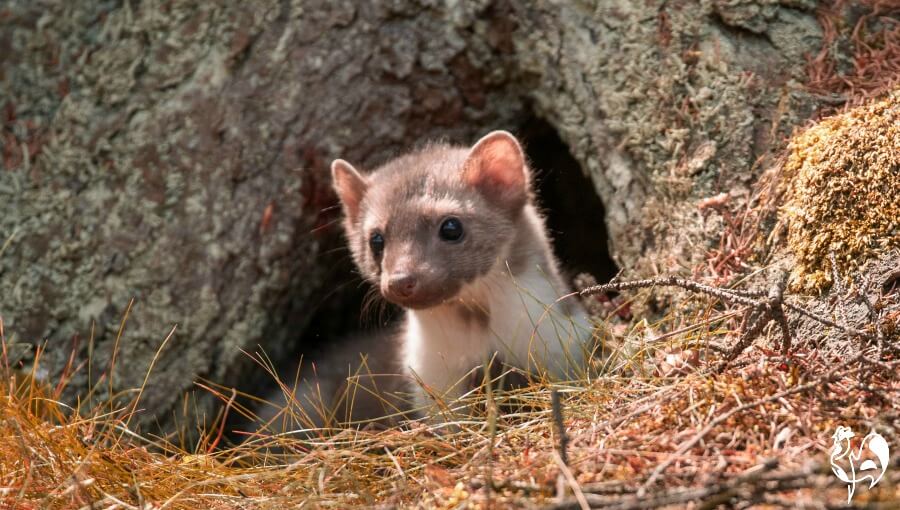 Beech martens, martes foina, also make their home in the hollow of trees.
Beech martens, martes foina, also make their home in the hollow of trees.When do pine martens hunt?
Martens are territorial animals who tend to live alone except for the mating season in July and August. Their territory can cover more than 33 square kilometres, although it's more usual to be between 1.5 and five kilometres (one and three miles).
Once you have a marten in your area it will be very hard to get rid of it.
The young, known as 'kits', are born in late March or April. Unfortunately, that often coincides with hatching season. And young chicks can make a tasty baby pine marten treat.
So early spring is one of the times you'll see martens hunting, finding food to feed their young. Litters can have up to five kits - a lot of mouths to feed.
September and October is the other hunting season. The vegetation and berries they live on during the summer become more meagre, and the weather cools down. Martens need to stock up for the winter.
But they're opportunistic, so if there's a ready supply of any type of food, they'll be happy to take advantage at any time of year. And although they're mostly nocturnal - so hunt at dusk and during the night - we've seen them round our coop and run during the day, too.
They're also clever enough to know that where there's one egg or one chick, there will be more. So if you have one pine marten attack, expect them to be back.
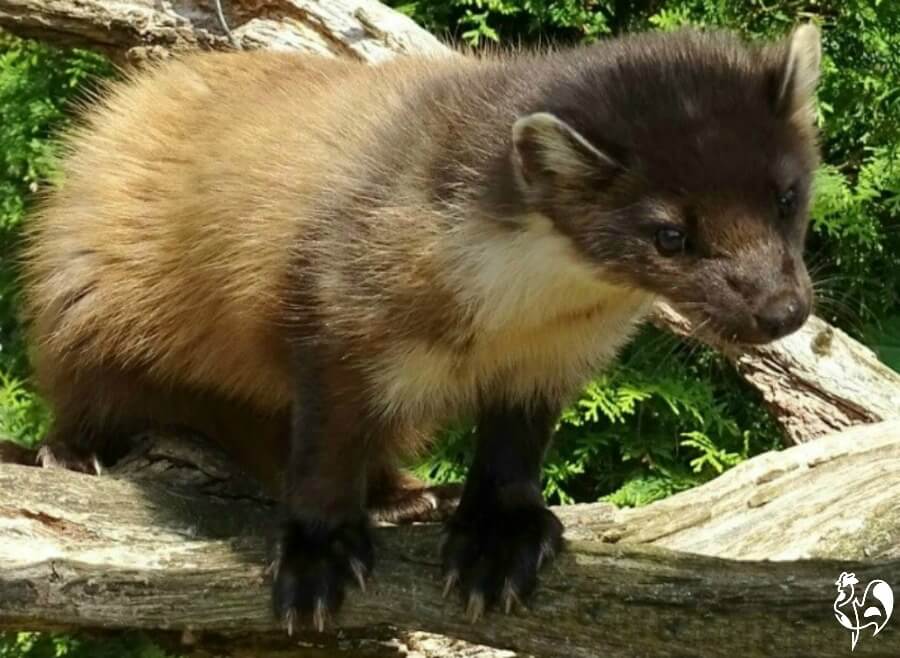 The pine marten: looks cute, but those claws are killers.
The pine marten: looks cute, but those claws are killers.What are the signs that a pine marten is responsible for a kill?
This is the graphic part.
If pine martens (or any member of the weasel family) finds a source of baby chicks, they will have no hesitation in eating them, and taking what they can manage back to their den for the kits.
With adult chickens it's not so easy. Martens are climbers, and not big enough to carry a carcass up and over a fence, so the chicken is likely to be left behind.
They kill by biting into the neck, just behind the head at the top of the spine, and their bite is so strong that they will usually decapitate the bird completely.
So if you find chickens whose heads have been parted from their body, it's highly likely you've been subject to a pine marten (or other group member) attack.
Trust me - it's a very, very unpleasant sight. And of course, a very distressing thought that chickens have died such an unpleasant death.
Make sure you prevent it from happening.
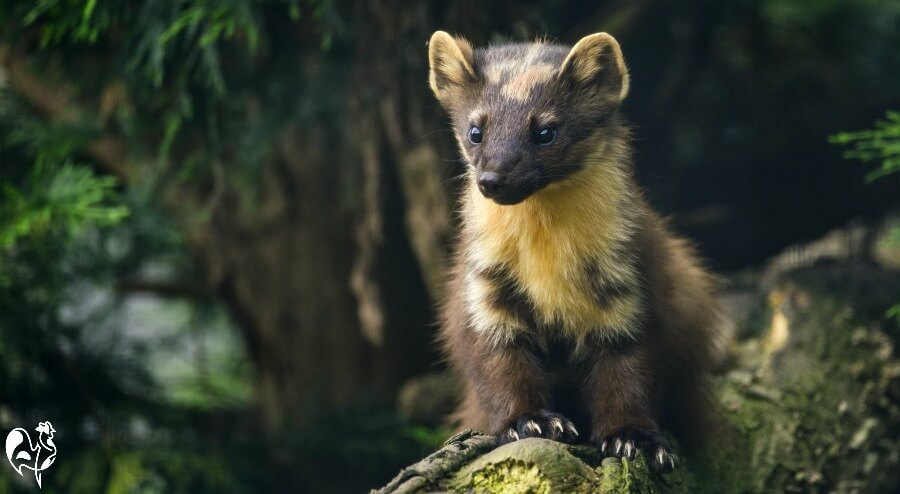 The pine marten's claws are retractable, which makes it an efficient climber.
The pine marten's claws are retractable, which makes it an efficient climber.How can martens be prevented from killing?
Links in this section are "affiliate links", which means that if you click and buy something, I earn a small commission at no extra cost to you.
This is a question I have had to answer for my own coop and run, and it's not an easy one.
The best prevention of all, no question, is a Livestock Guardian Dog. I have watched as my Maremma, Luce (pronounced Loochay, meaning "Light") chased a pine marten climbing my chain-link fence.
If that's not possible, or even if you have a Livestock Guardian and want extra protection, there must be adequate fencing.
To look at how to protect, we need to look at what we now know about the pine marten and its habitat.
1. Pine martens are very accomplished climbers.
Their size and weight makes them incredibly agile and means they can climb very quickly. They've been timed scaling a two metre (six foot) fence in just three seconds.
So the top of the fence needs some way to stop them jumping over into a run.
Here are a few ideas :
- Electric fencing attached to over-reaching posts. This is the system by which pine martens have been contained in captivity, so if you can manage it, it's proven to be the most effective way of keeping them out. Posts extend 500 mm (18") outwards from the top of the fence. The electric fencing is held taut between them.
- The disadvantage here is that pine martens are quite small. If they can get their skull through a hole, they'll get the rest of their body through too. The skull measures just 5 centimetres (about 2") wide, so any fencing, electric or otherwise, must have gaps no bigger than about 3cm (1").
- Outward-facing, over-reaching posts can be attached to the top of some fences and either strong mesh or chain link wiring attached. When the climber reaches the top of the fence, it can't go any further. The same thing applies to the fencing gaps.
- Line wire fencing. If extending posts aren't possible, try placing the same line wire electric fencing at the top of the fence. It should be about 50mm (2") above the fence. Putting another wire parallel to the fence is also recommended, as martens are capable of passing over the top wire so quickly that it has no effect.
- See my detailed article about how to fence a chicken run for more options.
2. Pine martens tend to be nocturnal.
- Motion sensor lighting may help, because members of the weasel family are usually nocturnal, so they're startled by sudden bright light.
- However, they're also very quick to learn. Once they know there's no real consequence to this, it's unlikely to have much effect.
3. Martens use other people's burrows!
Martens are not particularly good diggers but they do often use the burrows or tunnels of other animals, particularly badgers, to live in.
So it makes sense to prevent any possibility of anything burrowing on the basis that the marten might well use it to enter the run. They are, after all, opportunists.
So...
- Make sure your fencing is buried into the ground by at least 18". My own coop and run are surrounded by a seven foot high, strong chain link fence which is dug two feet into the ground and has an 'L' shaped 'apron' at the bottom.
- Digging predators as big as foxes just can't penetrate that kind of defence - and that's not how the marten got into my run.
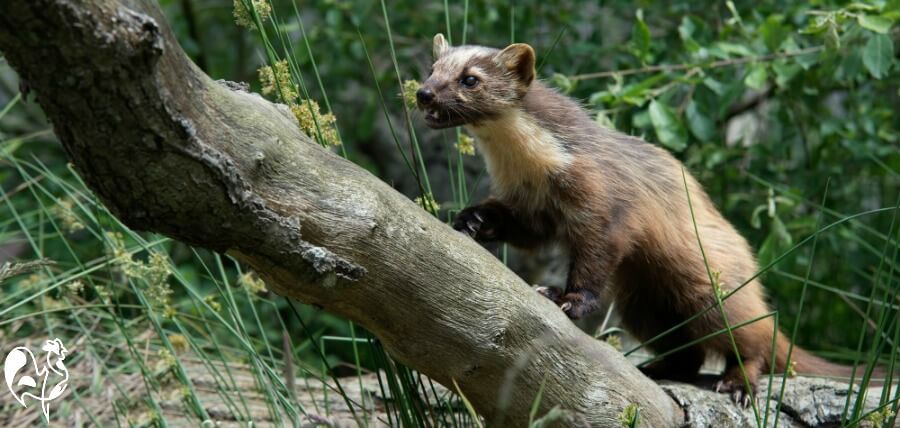 The pine marten - look at those razor-sharp teeth and claws.
The pine marten - look at those razor-sharp teeth and claws.Other basic considerations to prevent pine martens from attacking.
- Block any holes in the fence. This goes without saying: if they find a hole, they will use it.
- Make sure your chicken coop itself is secure. Block any holes and replace rotting wood immediately. Martens will actively hunt out rotten wood and enlarge holes with their razor-sharp claws.
- Secure your pop door and make sure it's closed at night. Martens learn quickly to take advantage of insecure coops.
- Use strong fencing. Chicken wire is not enough - those claws can rip it open. A heavy duty chainlink is good.
- Use fencing with gaps of no more than 31 millimetres. Martens' skulls are about 50mm wide, and they will squeeze their body through any gap where they can fit their head.
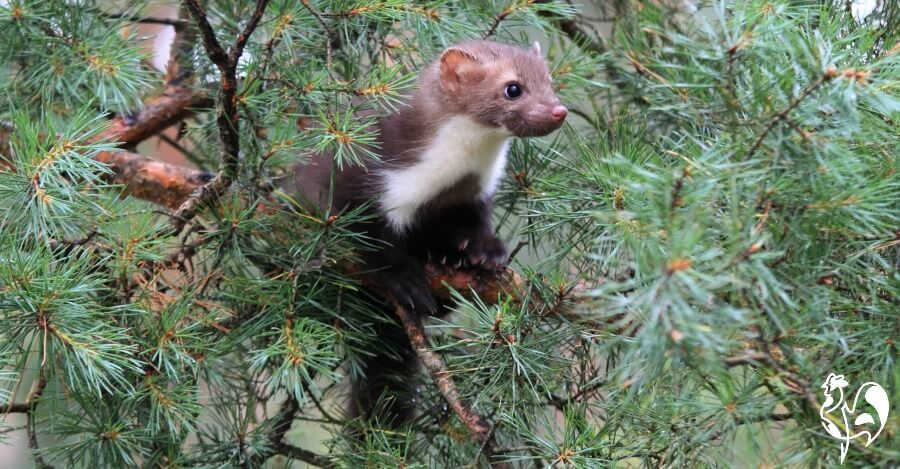 A beech marten, distinguished from his pine marten cousin by white, rather than orange, chest fur.
A beech marten, distinguished from his pine marten cousin by white, rather than orange, chest fur.- Remove any tree branches either overhanging, or within three metres (about ten feet) of the run. Not only do martens climb trees with ease, they're adept at jumping across quite large distances.
- And that is how "my" pine marten got into my coop and decimated my flock. Needless to say, our pine trees are not left overhanging my chicken coop any more.
And finally: remember the pine marten is a protected species in many places.
Although the pine marten's habitat has been detroyed in many parts of North America, it is not a protected species. However, in some states where it's become extinct, conservation initiatives have been introduced.
It's important to know that in many countries where pine and beech martens are relatively rare, including the UK and Ireland, they are a protected species. It's illegal to kill, trap or harm them, or to destroy their habitat.
It's perfectly possible to live with martens on your doorstep and still have a healthy flock of chickens - I do.
So protect your chickens by deterring martens by all means - but stay within the law.
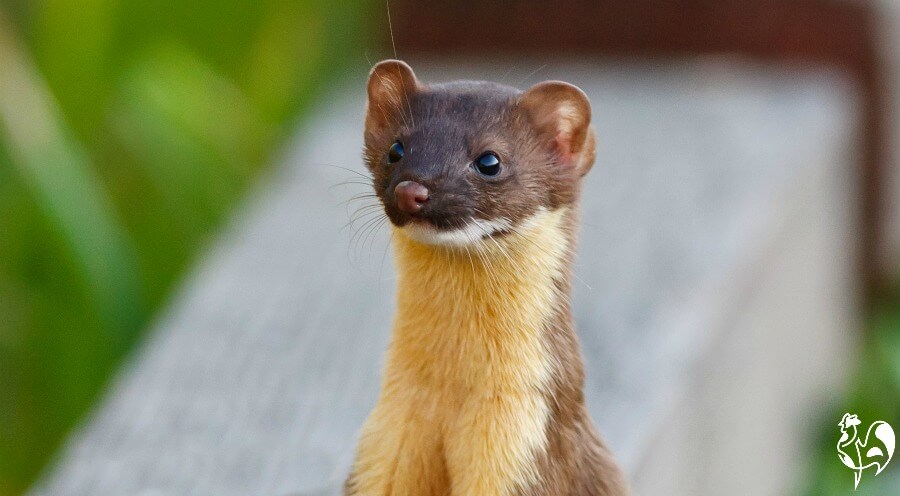
More information about keeping chickens safely.
Sources and further reading.
A lot of "facts" you'll find on the internet are often people's individual views, often based on inaccurate information repeated from poor quality sources.
The information I provide in this article and others is based not just on my own experience, but on evidenced facts from scientific, peer-reviewed research.
Some of the sources I have used are these - click the link to read the full document:
Lynch, A. and McCann, Y: The diet of the pine marten. Pub. Department of Zoology, Trinity College, Dublin.
Ambrose-Oji, B: Assessing public and stakeholder attitudes to pine martens. Pub. Forest-Research.gov.uk, 2019.
